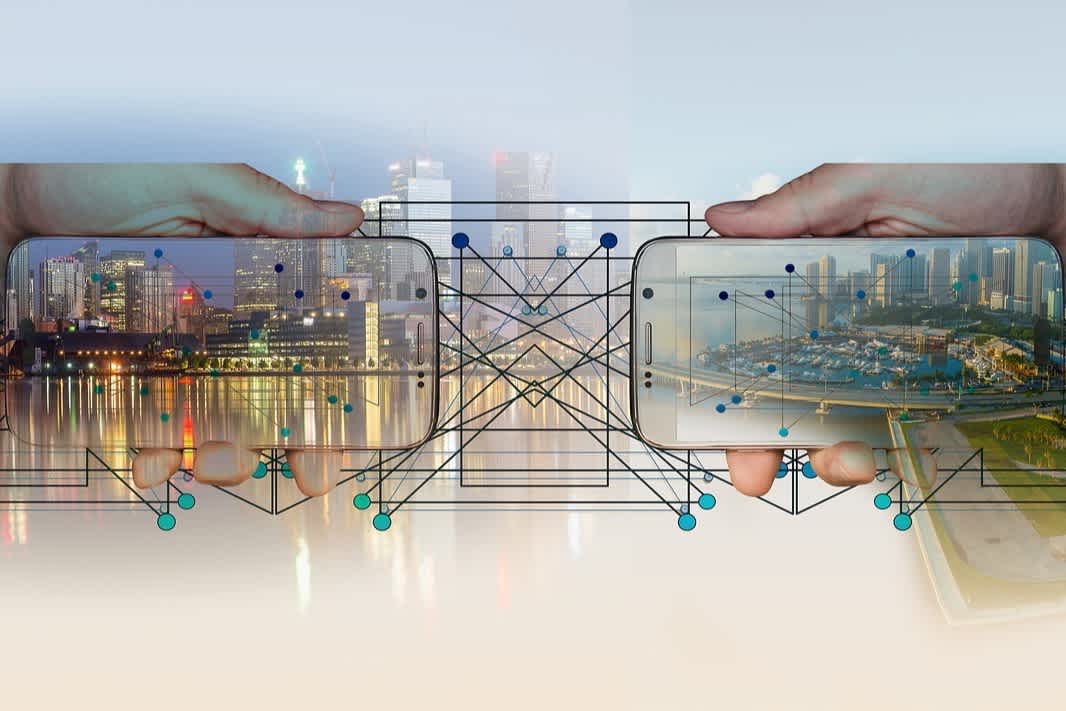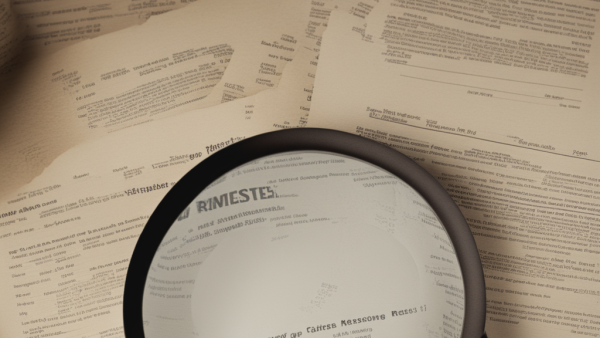
Last updated: July 08, 2022
Business involves growth, and growth comes with challenges, different variables and growing pains. The process of scaling a business, eCommerce operations in particular, involves sourcing high-quality products.
Before the COVID-19 pandemic, the supply chain was often taken for granted, and today, logistics have attracted the attention of businesses that are looking to scale their operations. That’s why 90% of Fortune 500 companies partner with third-party logistics providers to manage their warehousing, inventory management, transportation providers, and fulfilment processes. As eCommerce has grown exponentially, so has the interest in partnering with third-party logistics – the 3PL market is expected to reach more than $1.75 trillion by 2026 with a growth rate of 8% during the period 2021-2026.
This article will shed light on what a third-party logistics (3PL) provider is, what they do, and the main reasons to work with third-party logistics.
Table of contents
- What is a 3PL provider?
- How does 3PL work?
- Why work with a 3PL provider?
- Third-party logistics processes – the most common 3PL services
- 3PL myths and misconceptions
- Which 3PL company is right for you?
- 3PL FAQ
What is a 3PL provider?
3PL providers are companies that offer logistics services that help eCommerce merchants manage their supply chains. Common services they provide include warehouse and inventory management, order fulfilment, shipping coordination, retail distribution, exchanges, and returns.
As many companies are finding it difficult to navigate the unknown variables of the supply chain, they partner with third-party logistics providers that deal with shipping and order fulfilment with expertise and handle the inventory in the warehouse including picking, packing, and shipping the products to their customers.
It can be daunting and expensive to have your own warehouse to manage your distribution. This is why more companies work with 3PL providers to store and distribute their stock directly from the warehouse to the customer.
The process is straightforward: the customer places the order online, and the 3PL supplier takes over the process and delivers directly to the customers, providing a seamless experience. This frees up capacity for eCommerce businesses to focus on developing new products, diversifying their portfolio, and working on their marketing strategies.
According to Penske Logistics’ 2022 third-party logistics study, 90% of the 3PL providers confirmed a successful collaboration with eCommerce businesses – they worked together to focus on priorities and overcome challenges.
What 3PL is not?
3PL refers to the outsourcing of eCommerce logistics processes and has three main elements of inventory management, warehousing, and fulfilment. Many merchants confuse a private warehouse that stores their own products and fulfils orders for their customers with a third-party logistics provider. Mostly, these warehouses are part of large retail stores or manufacturers.
3PL works as an intermediary between the seller and customer, and sometimes it is confused with a freight broker.
3PL deals with logistics processes and does not refer to matching up businesses with couriers or drivers.
3PL deals with logistics and doesn’t involve any marketing or communication process between the warehouse and the customer other than the tracking of the product.
How does 3PL work?
Different 3PL providers might vary in their offerings, but generally, the process is as follows:
1. The 3PL provider receives the inventory directly from the supplier according to the merchant’s requirements.
2. When a customer places the order, the eCommerce business must manually or automatically forward the order to the 3PL provider.
3. Warehouse employees receive the picking lists and collect the item from the respective shelves in the warehouse.
4. An employee packs the product according to the order details.
5. The 3PL company automatically prints the shipping labels provided by the carrier partner, or created locally in the warehouse.
6. The shipping carrier collects the packaged order from the 3PL warehouse (distribution centre) and delivers it to the customer.
7. Using order management software, the tracking information is automatically uploaded to the 3PL system so that the merchant and the customer can easily see the order's status at any time.
3PL evolution
Logistics has evolved from a single-channel service to an omnichannel one – from 1PL through 2PL, 3PL, all the way to 4PL:
1PL: The seller delivers products directly to the customer using the merchant’s own transportation method
2PL: Couriers collect parcels from the seller and deliver them to the customer
3PL: The third-party logistics company manages the inventory, picking, and shipping the products to the customers on behalf of the seller
4PL: A more diversified version of 3PL, where the seller hires a logistics company to manage and execute their orders and take over the entire supply chain
Why work with a 3PL provider?
Rather than acquiring a warehouse, hiring employees to ship orders, signing contracts with couriers and drivers, and integrating warehouse management software, eCommerce businesses have the option to work with third-party logistics companies that will manage their entire supply chain so they can focus on other areas of their operations.
Supply chains are a very complex and complicated part of the retail industry and, at the same time, one of the most important. The integration of 3PL ensures a smooth process within the supply chain.
How can 3PL services help your eCommerce business?
In the last decade, the competitiveness within the eCommerce business has increased exponentially; eCommerce businesses now need to outsource many elements of their distribution, especially logistics.
3PL helps companies focus on other areas of operations and improve performance by fostering growth, market expansion, and innovation.
Pros of 3PL
The main advantages of working with 3PL include:
Lower costs for delivery due to the high number of orders executed by the 3PL provider
Scalability for your business by avoiding unnecessary activities
Cutting costs in the warehousing process and offering access to expertise and efficiency
No need to employ staff to deal with orders
The possibility to improve customer service
Optimised inventory management, allowing to analyse and optimise operations at any time
Rather than investing your time and money into controlling the warehousing, inventory and fulfilment process, you can partner with a 3PL and reduce operational costs.
Cons of 3PL
Loss of control
Control is believed to be one of the main attributes lost when partnering with a 3PL provider, a legitimate concern when it comes to the last leg of the delivery process.
Cost
While entrusting a 3PL provider to handle the supply chain can save a lot of money and time, external factors such as weather conditions, customs and duties, and over-regulation can lead to an escalation of costs. The agreements cover standard transaction costs, however, external trading factors cannot be predicted or controlled.
Understanding of the business
3PL providers are experts in logistics and handling warehousing and fulfilment. However, some companies might have specific requirements for storage, such as certain temperatures or temperature-controlled deliveries. Having hundreds or even thousands of customers, 3PL companies might not be able to treat all products with the level of attention they require.
Third-party logistics processes – the most common 3PL services
3PL processes mainly focus on warehousing and inventory management, orders and fulfilment, shipping coordination and tracking information, and returns and reverse logistics.
1. Warehousing and inventory management
3PL providers are responsible for the successful warehousing of your inventory, therefore they need to have an efficient inventory management system and software.
Knowing the location of your third-party provider can help scale your business and build a competitive advantage as the 3PL, depending on the area, can accommodate same-day or two-day shipping.
An efficient 3PL supplier will always check your inventory and based on the orders, will move your goods closer to the customers to achieve the most efficient shipping.
As a company, do what you do best and let a 3PL provider take care of what they do best: manage the inbound of products, their storage, and fulfilment. In order to perform these functions, 3PL providers implement different processes to ensure that they know exactly what happens with a product from the moment it arrives at the warehouse until it reaches the customer. Inventory Management Systems take the core of the process online, they’re easy to use, accessible 24/7, and capable of managing a large influx and outflux of goods and materials.
2. Order management and fulfilment
Order management systems (OMS) help track stock levels across all locations and give you enough data to get the products to your customers at the fastest rate possible. Integration of the OMS with your company software ensures efficient product management and on-time shipping.
3. Shipping coordination
An efficient 3PL provider can deliver the orders using their own service or can partner with couriers and drivers using different transportation services. The best 3PL providers will guarantee the most efficient shipping processes in order to stay ahead of your competition. One-day or two-day shipping has been proven to attract more customers and drive more conversions and sales.
As soon as a customer places an order, the platform integration software sends the order details to the 3PL provider. They will then send the order as quickly as possible.
Third-party logistics providers automatically print the shipping labels followed by the shipping carrier collecting the packaged order from the warehouse (distribution centre) and delivering it to the customer.
In a world where almost everything is at a click of a button, shipping plays a vital role in the shopping experience. Good shipment coordination will ensure that the right product goes to the right customer on time and can help sellers grow their sales and meet customer demands. Therefore, effective coordination is essential for your business' success.
4. Same-day shipping
With increased competition from large retailers that provide same-day delivery services (51% of online stores), 3PL providers help you stay competitive. According to recent studies,49% of shoppers are more likely to purchase a product that offers same-day delivery.
Understanding the importance of moving fast in our modern world, cutting a day or two off delivery times can mean the difference between long-term success and failure.
5. Order tracking
Efficient order fulfilment means being able to track the status of your order at any point in time, and is not enough for a 3PL provider to just ship orders out. The provider also needs to send an order confirmation and delivery information to the customer.
6. Reverse logistics
3PL providers must successfully manage your returns and exchange processes to ensure that your company stays competitive. Before launching an eCommerce business, choose the location where your products will be sold. If you are planning on operating internationally, ensure that you choose a 3PL provider with locations in multiple countries and is efficient in managing cross-border shipping and local taxes.
Reverse logistics refers to the process of goods returning to the warehouse they were sent from. It has become a part of the supply chain's strategic planning. Rather than letting returns negatively affect their business, companies prefer to have an efficient reverse logistics system to improve the customer experience. Companies that have efficient return and exchange services have better customer service ratings.
The advantages of reverse logistics
Cost-saving due to an increased return rate in customer behaviour – by accepting returns, companies can increase their sales.
Customer satisfaction is ensured by having a quick and easy return process which can also contribute to customer retention.
Sustainability – the returned products reenter the market rather than being discarded.
Good data insights – by analysing the returns, merchants can identify product issues and find solutions before a low-quality, faulty, or mismarketed product harms their reputation. Effective reverse logistics can give valuable data to further streamline operations and be more cost-effective.
7. eCommerce platform integration
Statistics show that 80% of consumers shop online. To support businesses selling online and efficiently fulfilling orders, hundreds of B2B eCommerce applications integrate marketing, customer support, fulfilment and more. These applications help merchants to automate some of their business functions and increase efficiency through technology.
Businesses opt for eCommerce integration because it helps them sync data from two sources or applications. For example, a customer orders a product from a company’s website. WooCommerce will then send the details about the orders, such as shipping address and exact item, to Salesforce, a CRM tool that will send the information to the 3PL. Synchronising systems ensures that orders are automatically fulfilled and shipped to the customer while simultaneously updating the inventory levels, so there is no need for manual data entry.
Using an eCommerce integration platform as a service (IPaaS) enables apps to connect to share data and automate activities.
8. FTL and LTL freight shipping and receiving
Full truckload (FTL) and less-than-truck-load (LTL) are freight shipping methods – LTL is when multiple shippers’ freight is on the same trailer, while FTL refers to sending large shipments from a single source using an entire truck
LTL fills the trailers to their maximum capacity, making shipping more affordable for small businesses. LTL is more cost-effective when you are shipping a small volumes (less than six pallets, ideally).
With FTL you have exclusivity of the truckload, avoiding any third parties or changing hands during shipping. FTL is also more time-effective. The truckload is shipped from the manufacturer directly to your destination and has a predictable transit period and process.
In a nutshell, LTL is best if you are not time-restrained and have a small shipment, while FTL is a better fit if your business is growing and you can provide a full truckload with one shipment.
3PL myths and misconceptions
Business owners have doubts regarding outsourcing logistics, especially when using 3PL for the first time. Several myths and misconceptions hold merchants back from partnering with 3PL providers:
Myth 1: You lose control over operations when outsourcing logistics to 3PL
Though it sounds counterintuitive, a certain disconnect between the goods and the company gives you more control than ever. An efficient 3PL provider will have advanced technology and Inventory Management Systems, which means that experts are dealing with the process, and mistakes are less likely to occur. By having access to insights and data 24/7, you can manage the process remotely, which helps you focus on other areas of your business.
Myth 2: 3PL is suitable only for large businesses and enterprises
3PL providers have efficiently integrated their processes and offer plenty of advantages to small businesses that need expertise and innovation. As a business owner, 3PL can actually help you free up capital, reduce overhead costs, and efficiently manage your entire supply chain. Partnering with a 3PL provider allows merchants to be flexible without increasing the costs during seasonal demand or promotions while continuously delivering efficient and seamless customer service.
Myth 3: 3PL providers are too costly with hidden fees
The pricing strategy of 3PL is indeed complex; however, these costs are always explained as additional fees in terms of inbound and outbound costs, customs and duties, or custom packaging. Managing operations by yourself requires a lot of time and resources. If you were to add up all the costs and fees that you would have to face individually, 3PL is more cost-effective and efficient in comparison.
Which 3PL company is right for you?
Europe is a hot eCommerce market with a high rate of online purchases per capita. In 2020, Western Europe registered 64% of the total European eCommerce turnover, and the UK registered the highest rate of online shoppers.
Due to the accelerated shift in consumer behaviour and an increased interest and growth in online sales, 3PL providers are motivated to offer increasingly attractive services in terms of delivery time, shipping costs, reliability, flexibility, and agility to deliver the best service level agreement metrics.
Before choosing a 3PL provider, research where you will be selling your products and how many products you will be selling. Some areas and territories may have difficulty distributing your products, and there may be cross-border restrictions in place.
Also, research which 3PL provider has proven processes, the most efficient resources, and the ability to integrate with your management systems.
Innovation and technology are essential elements to look at when choosing a third-party logistics provider. This will help you respond to rapid changes in supply chain dynamics. The use of technology will enable the merchants to predict, or at least recognise when the changes occur.
Three critical technologies for efficient third-party logistics providers are order management systems, network evaluation, and transportation optimisation tools. These enable visibility over the inventory across multiple processes and help identify relevant, cost-effective strategies and offer a wider choice of shipping options, ensuring a seamless service.
Always aim for scalability and custom capabilitiesto leverage your company’s strategy, optimise inventory, and deliver excellent service.
Stability is another vital aspect of an efficient third-party logistics partner as you entrust them with your products. In addition, a company with a proven success record can positively contribute to your brand awareness and equity.
Some of the most successful 3PL companies are:
3PL FAQ
What is a 3PL relationship?
3PL fulfils customer orders on the company’s behalf. Like with any other partnership, both parties need to be on the same page regarding organisational goals, objectives, and strategies.
An efficient 3PL relationship is one where the 3PL provider gets to know the business’ operations and applies the most effective inventory management, warehousing, and fulfilment procedures to ensure that the partnering business can successfully achieve its organisational goals.
A 3PL relationship is characterised by a high level of cooperation between the partners in order to attain the desired result.
What is the difference between 3PL services and dropshipping?
With dropshipping, the merchant is a simple intermediary between the supplier or manufacturer and the end client, without owning inventory. By contrast, a 3PL collaboration requires merchants to buy inventory, and outsource their supply chain,
What are the differences between a 3PL, freight forwarder, and a freight broker?
A freight forwarder is a company specialising in moving goods from A to B by arranging transportation through third-party carriers. So, freight forwarders are the service providers that arrange the entire process across different transportation modes: from ships to lorries or trains. They don’t usually operate their own fleet of vehicles but might use their own containers while providing cargo handling, packaging, consolidation, and paperwork.
A freight broker acts as an intermediary between shipping companies and third-party carriers, but as opposed to a forwarder, does not take possession of the freight itself. Typically, a freight broker operates only within their home country. Both freight brokers and freight forwarders assist in arranging the transportation of goods, but they use different methods.
3PL specialises in managing your supply chain in terms of logistical needs and moving the same products between the same warehouse location or locations of the same provider. Third-party logistics are more complex companies, offering a wider range of services such as warehouse storage, inventory management, and timely shipping.
Are third-party logistics providers the same as order fulfilment?
No, third-party logistics are more complex service providers that manage your entire supply chain, while order fulfilment refers to companies that only process and ship orders to customers.
What industries use 3PL the most?
3PL providers serve clients mostly from the retail, technology, energy, healthcare, manufacturing, and the automotive industries. DHL is the largest 3PL provider worldwide, and according to the latest data from Armstrong & Associates, 90% of Fortune 500 companies partner with a 3PL.
How do you manage a 3PL provider?
Managing an efficient third-party logistics provider starts with setting up clear objectives and clarifying shared goals and expectations to avoid any confusion down the line. This needs to be specified in the service level agreement between the merchant and the 3PL. This is vital to maintaining an effective supply management operation and helps build a beneficial relationship between your business and a 3PL company.
What’s the most important factor when choosing a 3PL partner?
Each provider has its strengths and weaknesses, and understanding those makes selecting the right service provider easier. Logistics management being their core activity, check their best practices and industry relationships in terms of transportation, equipment, and specialised labour.
If a 3PL provider has a good track record with eCommerce businesses of similar profiles to yours, it might be a relevant indicator of a potentially great partner.
How can I monitor my 3PL partner’s performance?
Monitoring your company’s supply chain management helps incentivize the 3PL partner and improve shipping and order accuracy. You need to rely on data provided by the third-party logistics services to understand how your business is performing.
Also, you need to ensure that you have an efficient reporting system, check the efficiency of your shipping and delivery of orders, and reverse logistics issues. Ensure to engage with the feedback received from customers regarding shipping-related complaints.
Three key performance indicators are used to measure 3PL performance:
shipment and receiving efficiency – how fast your product is delivered to the customer
order accuracy – getting the right order which should score nearly 100% and no mistakes or issues should occur
customer reviews – end-client feedback on the delivery experience
What is the reason for using 3PL services?
If you feel that you cannot handle your fulfilment efficiently and your business needs to focus on other areas, then it’s the right time to find a 3PL provider who can handle your supply chain for you.
Written by

Sam founded his first startup back in 2010 and has since been building startups in the Content Marketing, SEO, eCommerce and SaaS verticals. Sam is a generalist with deep knowledge of lead generation and scaling acquisition and sales.


